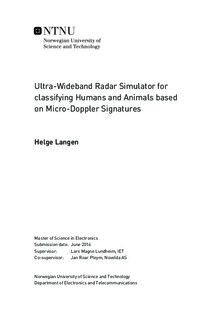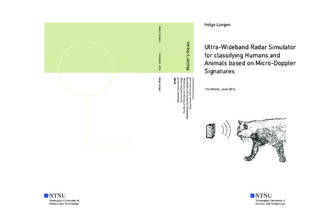| dc.description.abstract | A system has been developed to allow computers to autonomously classify radar targets based on their micro-doppler signatures. The solution consists of an algorithm for generating a targets micro-doppler signature through frequency analysis of the radar signal, a multi-layer artificial neural network for classifying the target based on the information in the processed signal, and a generator that creates synthetic data for training the artificial neural network.
The neural network is trained using deep learning techniques. Point scatterer models of walking humans, dogs and domestic cats and a mathematical model of an ultra-wideband pulse-doppler radar was used when generating the synthetic training data. Random variations were applied to the model parameters to mimic the real-world diversity experienced between the different specimen of the same species.
In a set of synthetically generated evaluation data, the system was able to correctly classify 444 out of 500 targets (accuracy of 89%). The best results were obtained when the network was fed with a combination of micro-doppler signature data and selected portions of the raw baseband radar frames. It was also shown that the accuracy increased when the synthetic training data was generated with a higher simulated pulse repetition frequency.
Some real recordings were made using a Novelda radar module featuring their X2 radar system-on-chip (SoC). The system was able to correctly classify the targets in the recordings with a very high confidence. While the number of real recordings used to evaluate the system is too low to conclusively qualify the solution as successful in real life conditions, it indicates that it might be possible to avoid costly data gathering by generating the training data synthetically, which is an interesting find in itself. | |

